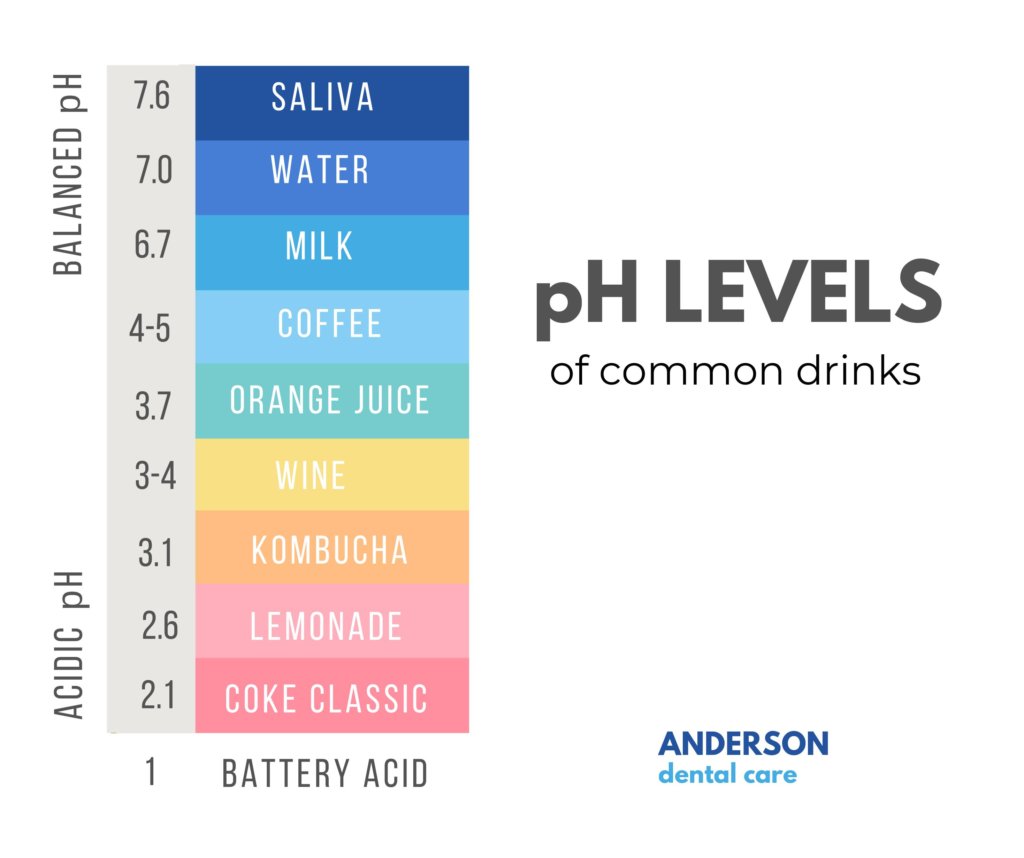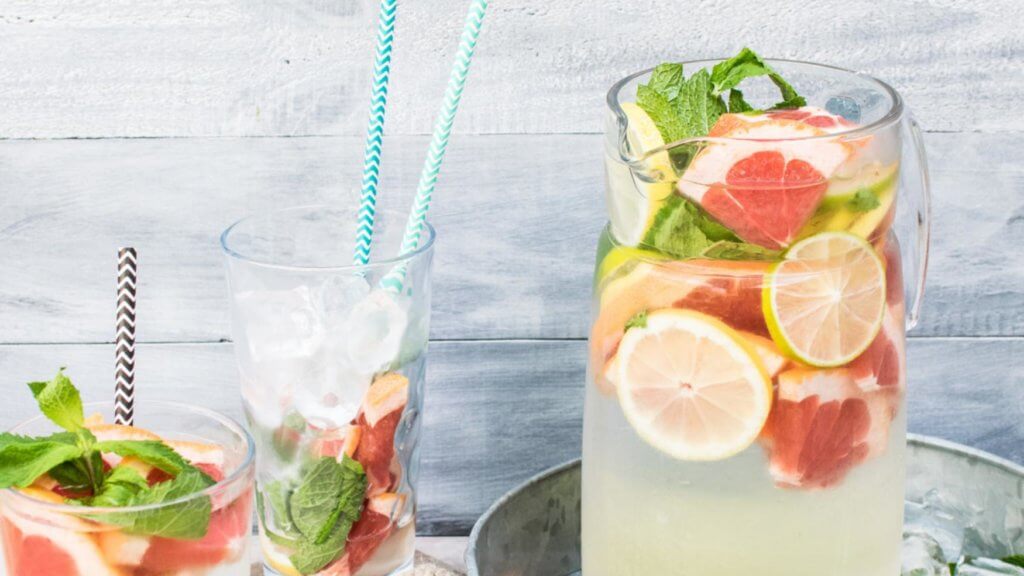
What is pH?
The pH scale is a measure of the acidity of a given substance. It ranges from 0 to 14 — 0 being the most acidic and 14 the most basic (or alkaline). A substance with 7 pH is a “neutral” substance that is neither acidic nor basic. For example, water has a pH of 7.
The pH of your mouth
Think of the human mouth as a watery ecosystem that, like the rest of the body, requires a balanced pH that is ever so slightly alkaline. Your saliva sits around a pH of 7.6.
When you consume acidic foods and drinks, your oral pH is tipped, creating an imbalance that immediately starts to wear away the enamel on your teeth. If that protective layer wears away, it leaves your teeth vulnerable to plaque and bacteria, which cause decay, sensitivity, and discoloring. This decay begins when the pH level in your mouth drops below 5.5. Common drinks like coffee and orange juice both have acidic pH levels.
Once your mouth becomes acidic, your saliva kicks into gear to remineralize that damaged enamel and balance your oral pH. However, if you consume acidic foods and drinks regularly and only rely on your saliva to rebalance your oral pH, you can run into problems. As your saliva fights the acidity, it becomes more mineral-based and begins to leave buildup on your teeth. Someone who drinks a lot of soda or coffee will have more tartar buildup than someone who doesn’t. Imagine a small coral reef of minerals starting to form on your teeth—that’s tartar. (Google for a photo if you’re curious.)
Don’t panic. You don’t have to stop drinking acidic beverages altogether, but you do need a plan.
If I told you you could only eat and drink balanced pH foods and beverages, you be bored to tears with your options, and you would likely be deprived of essential vitamins and minerals. Maintaining a healthy pH balance is possible while consuming acidic foods and beverages if you limit your intake and create habits for when and how you consume them.
These tips are built to help limit your enamel’s exposure to acid. The longer your teeth are exposed to sugar in an acidic environment, the higher the likelihood of tooth decay.
Have you ever noticed that when you take a while to sip on a soda (pH 2-3) or wine (pH 4), it feels like there are socks on your teeth, or they feel fuzzy? That’s because the pH in your mouth has become acidic, and is causing demineralization of your enamel.
Tips to balance your oral pH
- DON’T NURSE THAT DRINK OR SNACK
Sipping on drinks and snacking on food are two main culprits when it comes to acidity and tooth decay. Keeping a soda or snack at your desk to graze on, taking all morning to finish a coffee, or savoring a glass of wine all night all create a long term acidic environment in your mouth without giving your saliva a chance to rebalance it.
- RINSE WITH WATER
If the thought of guzzling your morning coffee, or racing through your happy hour glass of wine feels wrong, I understand. Kindly ask your barista, bartender or server to give you water with your drink. Every time you are sipping on an acidic beverage or snacking on anything sugary or starchy, have a glass of water nearby. Alternating between the acidic drink/snack and water will help your mouth to rebalance faster. You run into trouble when your saliva has to do ALL the work. Think of water as the “great neutralizer.”
- WHEN YOU DRINK YOUR WATER THROUGHOUT THE DAY, GIVE IT A SWISH AROUND YOUR MOUTH.
It may seem a little silly, but rinsing your teeth with water throughout the day not only neutralizes your mouth’s pH but also can loosen food particles that are hanging around creating food for the 6 billion bacteria in your mouth.
- USE A STRAW (preferably not a single-use plastic straw)
Keeping the acid away from your teeth altogether is another excellent option! We are an environmentally conscious bunch here at Anderson Dental Care so we recommend acquiring a reusable straw or biodegradable paper straws. Find a style that works for you and keep a stash of them around your home and office so you’re never without one.
- ADD MILK TO YOUR COFFEE
If it suits you, use a form of milk or plant milk (not a sugary flavored creamer) to counteract the acidity in your coffee. Both animal and plant milk are low in acid and can bring down the overall acidity of your coffee.
- CHEW GUM
After a meal or an acidic drink, chew sugar-free gum, ideally one containing xylitol. The action of chewing gum encourages the mouth to make saliva, which over time will restore pH balance. Xylitol also prevents bacteria from clinging to tooth enamel.
*Unfortunately I don’t recommend this strategy if you have TMJ or similar jaw issues.
- FINISH YOUR MEAL WITH AN BALANCED OR SLIGHTLY ALKALINE FOOD
If there is a cheese board on the menu for dessert, go for it! Finishing your meal with a soft cheese like Camembert (pH 7.5) is a great option. Bananas, coconut, and melons are other great options to restore pH balance after dinner.
- WAIT TO BRUSH!
YES, you read that correctly! Do not brush your teeth immediately after drinking a soda, wine, cider, beer, fruit juices, etc. Remember, I mentioned earlier that the breakdown of your enamel happens quickly! Because the enamel is already softened by the acidity, toothbrush bristles will literally brush off the enamel, thinning that protective layer surrounding the dentin. Instead, after that acidic drink, rinse and swish with water and wait at least 30 minutes before you brush.

